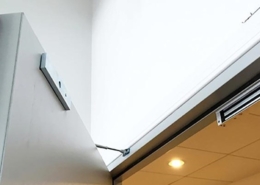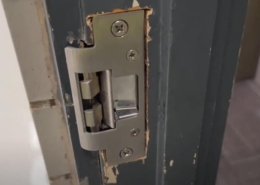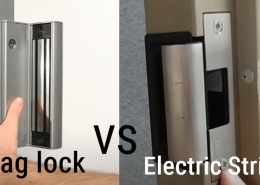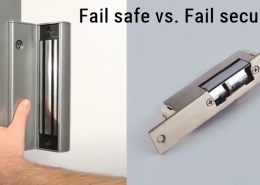Understanding Electric Door Strike Problems: Causes and Solutions
Encounter issues with your electric door strike? Dive into common problems, their causes, and effective solutions to ensure your security system functions seamlessly.
Like any electronic device, electric strikes can sometimes encounter issues. Here are some common electric strike problems you might experience and some troubleshooting steps you might take to resolve them:
Problem 1: Electric Door Strike not Locking
If your electric door strike is not locking, Here’s a step-by-step troubleshooting guide to help you identify and potentially fix the issue:
- Power Supply: Ensure the power supply to the electric strike is active. Use a multimeter to check the voltage at the strike’s terminals. It should match the strike’s rated voltage. Check for any blown fuses or tripped circuit breakers in the power supply.
- Wiring: Inspect the wiring for visible damage, such as cuts or fraying. Ensure that all connections are secure. Loose wires can prevent the strike from receiving power.
- Door Alignment: Ensure that the door is properly aligned with the frame. If the door has sagged or shifted, the latch may not align with the electric strike, preventing it from locking. Adjust the door or strike as necessary to ensure proper alignment.
- Mechanical Obstruction: Check for any debris or foreign objects in the strike that might prevent it from locking. Ensure the keeper (the part of the strike holding the latch) can move freely.
- Activation Signal: If the strike is controlled by an access control system, intercom, or another device, ensure that the system is sending the correct signal to the strike. Test the system’s output with a multimeter to ensure it’s sending the correct voltage when activated.
- Fail-Safe vs. Fail-Secure: Electric strikes can be either fail-safe (unlocked when power is lost) or fail-secure (locked when power is lost). Ensure you have the correct type for your application and that it’s wired correctly.
- Solenoid or Motor: The solenoid or motor inside might be faulty if the strike receives power but doesn’t operate. You might hear a faint click when power is applied, indicating the solenoid is trying to operate but might be jammed or broken.
- Latch Mechanism: Ensure the door’s latch enters the strike’s keeper smoothly. If the latch is damaged or misshapen, it might not interact correctly with the electric strike.
- Temperature and Weather: Extreme cold or heat can affect the operation of an electric strike. If the strike is exposed to the elements, ensure it’s rated for outdoor use.
If you’ve gone through these steps and still can’t identify or resolve the issue, it might be time to consult a professional locksmith or access control technician. They can provide further diagnostics and potentially recommend a replacement if the strike is faulty.
Problem 2: Electric Door Strike not Unlocking
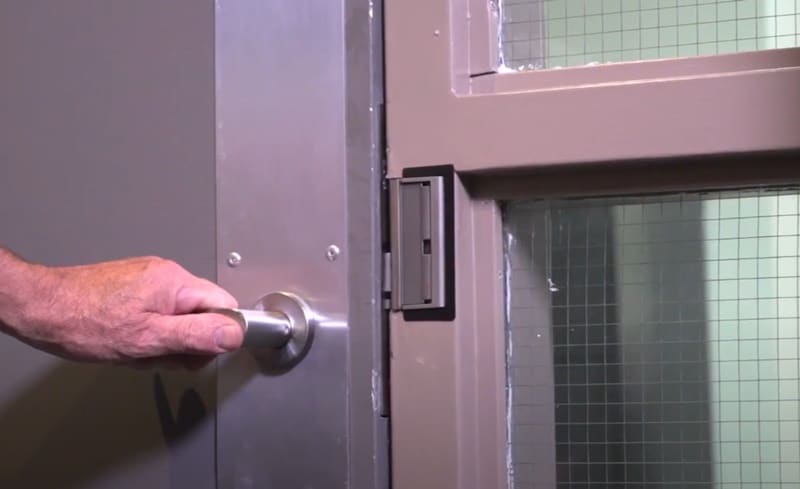
If your electric door strike is not unlocking, there could be several reasons for the malfunction:
- Power Source: Ensure the power source to the electric strike is active. Check if other devices connected to the same power source are working. Use a multimeter to check if the correct voltage is reaching the strike.
- Wiring: Check for any loose or disconnected wires. Ensure that the wiring is done correctly as per the manufacturer’s instructions.
- Access Control System: If the electric strike is connected to an access control system, ensure that the system is functioning correctly. Check if the access control system sends the correct signal to unlock the door when activated.
- Manual Override: Some electric strikes come with a manual override feature. Try using this feature to see if the strike unlocks.
- Mechanical Issues: The mechanical components of the electric strike may be jammed or broken. Inspect the strike for any visible damage. Ensure that the door latch is properly aligned with the strike. Misalignment can prevent the strike from releasing the latch.
- Listen for a Clicking Sound: Listen closely when activating the strike. If you hear a clicking sound, it might be a mechanical issue, but the door doesn’t unlock. It could be an electrical issue if you don’t hear any sound.
- Check the Lock Status: Some electric strikes have a status indicator (either a light or a sound) that indicates whether the strike is locked or unlocked. Check this indicator to see if it corresponds with the actual lock status.
Always ensure safety when working with electrical components—disconnect power when working on the strike and use appropriate tools and protective equipment.
Problem 3: Electric Door Strike Sticking
If your electric door strike is sticking, it can be due to various reasons:
- Check Door Alignment: Over time, doors can sag or shift, causing the electric strike to be misaligned. Ensure the door latch and the electric strike align perfectly. If not, you may need to adjust the door hinges or reposition the strike.
- Inspect for Obstructions: Check the electric strike’s keeper (the part that holds or releases the latch) for any debris, dirt, or foreign objects causing it to stick.
- Lubricate: Use a non-greasy lubricant suitable for electric strikes. Apply it to the moving parts of the strike to ensure smooth operation. Avoid using too much, as excess lubricant can attract dirt.
- Check the Mechanical Parts: Manually operate the strike’s keeper to see if it moves freely. If it’s hard to move, there might be internal damage or wear.
- Temperature and Weather Effects: Exposure to extreme cold or heat can affect its operation if the electric strike is exposed. For instance, cold weather can cause parts to contract, leading to sticking. Ensure the strike is rated for the environment in which it’s installed.
- Check the Power Supply: If the electric strike receives too much or too little power, it might not operate correctly. Use a multimeter to check the voltage at the strike’s terminals. It should match the rated voltage for the strike.
- Wear and Tear: If the electric strike has been used for a long time, the internal components might be worn out, causing it to stick. In such cases, replacing the strike might be the best solution.
Ensure the power is turned off when working on electrical components to ensure safety. If the problem persists after troubleshooting, it might be time to consider replacing the electric strike.
Problem 4: Electric Strike Unlocks But Does Not Lock
- Type of Electric Strike: First, determine if your electric strike is “fail-safe” or “fail-secure.” A fail-safe electric strike requires power to lock, and it unlocks when power is lost. Conversely, a fail-secure electric strike requires power to unlock and lock when lost. If you have a fail-safe strike and it’s not locking, there might be an issue with the power supply or wiring.
- Access Control System: If the electric strike is connected to an access control system, ensure the system is sending the correct signal to lock the strike. Check the system’s settings. Some systems have a delay before re-locking, or they might be set to remain unlocked under certain conditions.
- Mechanical Obstruction: Ensure that no obstruction prevents the strike’s keeper (the part that holds or releases the latch) from returning to the locked position. Manually operate the strike’s keeper to see if it moves freely and can return to the locked position.
- Door Alignment: Ensure the door latch and the electric strike align perfectly. If the door has sagged or shifted, the latch might prevent the strike from returning to the locked position. Adjust the door or the strike as necessary to ensure proper alignment.
- Lubrication: The mechanism might be sticking due to a lack of lubrication. Apply a suitable non-greasy lubricant to the moving parts of the strike to ensure smooth operation.
- Internal Damage: The solenoid or internal components of the electric strike might be damaged or worn out, preventing it from locking. If you suspect this is the case, you might need to replace the strike or its components.
Problem 5: Electric Strike Not Latch Properly
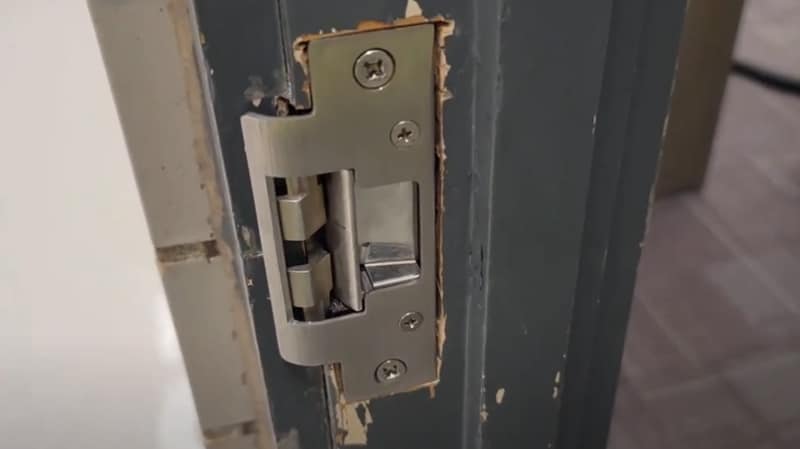
If an electric strike isn’t latching properly, it can compromise the door’s security. Here’s a step-by-step guide to help you troubleshoot and possibly fix the issue:
- Check Door Alignment: Over time, doors can sag or shift, causing misalignment with the electric strike. Ensure the door latch and the electric strike align perfectly. If not, you may need to adjust the door hinges or reposition the strike.
- Check the Latch and Strike Alignment: Ensure that the latch from the door lock is properly aligned with the hole, or keeper, in the electric strike. If they’re misaligned, the door might not latch properly.
- Check for Obstructions: Ensure nothing obstructs the latch or the electric strike that could prevent the door from latching properly.
- Inspect the Electric Strike Keeper: The keeper is the part of the electric strike that holds or releases the latch. Check it for any visible damage, wear, or obstructions. Manually operate the strike’s keeper to see if it moves freely and can hold the latch securely.
- Lubrication: The mechanism might be sticking due to a lack of lubrication. Apply a suitable non-greasy lubricant to the moving parts of the strike to ensure smooth operation.
- Internal Damage: The solenoid or internal components of the electric strike might be damaged or worn out, preventing it from latching properly. If you suspect this is the case, you might need to replace the strike or its components.
Problem 6: Electric Strike Makes a Buzzing Noise
If your electric strike is making a buzzing noise, it’s typically an indication of an issue that needs addressing. Here are some potential causes and solutions:
- Continuous Duty vs. Intermittent Duty: Some electric strikes are designed for intermittent duty and are not meant to be continuously powered. If such a strike is powered for an extended period, it can start buzzing. Ensure you’re using the strike as per its design specifications.
- Voltage Issues: If the electric strike receives too much or too little voltage, it can cause a buzzing sound. Use a multimeter to check the voltage at the strike’s terminals and ensure it matches the rated voltage for the strike. Check the power supply and ensure it’s providing the correct voltage.
- Faulty Solenoid: The solenoid inside the electric strike can become faulty or wear out over time. If it’s not functioning correctly, it can produce a buzzing sound. In such cases, the solenoid or the entire strike might need replacement.
- Misalignment: If the door latch and the electric strike aren’t aligned properly, the latch might not fully engage with the strike, causing a buzzing sound. Check the alignment and adjust the door or strike as necessary.
- Wiring Issues: Loose or damaged wiring can cause intermittent power connections, leading to a buzzing sound. Inspect the wiring for any signs of damage, fraying, or loose connections.
- Mechanical Obstruction: Ensure no obstruction or debris prevents the strike’s keeper (the part that holds or releases the latch) from moving freely. Any obstruction can cause the solenoid to work harder, leading to a buzzing sound.
- Lubrication: Lack of lubrication in the moving parts of the strike can cause a buzzing sound. Apply a suitable non-greasy lubricant to ensure smooth operation.
Problem 7: Electric Strike is Overheating
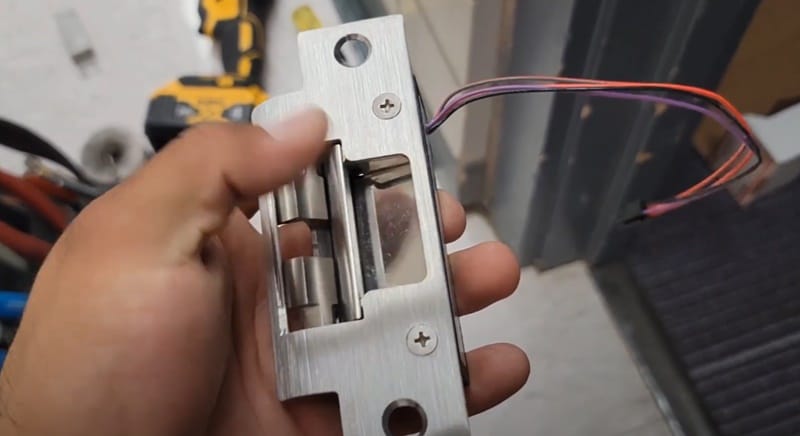
If your electric strike is overheating, it’s a serious concern that needs to be addressed immediately. Overheating can lead to malfunction, reduced lifespan, or a fire hazard. Here are some steps to diagnose and address the issue:
- Disconnect Power: Before doing anything, ensure the power to the electric strike is turned off. This will prevent any further damage and ensure your safety while investigating.
- Check Voltage: Ensure the electric strike is supplied with the correct voltage. Using a higher voltage than the strike is rated can cause overheating. Check the manufacturer’s specifications and compare them with the voltage being supplied.
- Continuous Duty vs. Intermittent Duty: Some electric strikes are designed for continuous (always energized), while others are designed for intermittent (energized only when needed). It can overheat if you’re using an intermittent duty strike in a continuous application.
- Wiring Issues: Inspect the wiring for any signs of damage, fraying, or loose connections. Faulty wiring can lead to short circuits or increased resistance, which can cause overheating.
- Ambient Temperature: If the electric strike is installed in an area with high ambient temperatures, it might be more prone to overheating. Consider relocating it or providing some form of cooling.
- Duty Cycle: It can overheat if the electric strike is used more frequently than designed. For instance, if installed on a high-traffic door and constantly activated, it might not have enough time to cool down between activations.
- Age and Wear: Electric strikes, like all electronic devices, can wear out over time. If your electric strike is old and has seen a lot of use, it might be time to replace it.
Remember, safety first. If you’re ever in doubt or feel uncomfortable working with electrical components, it’s always best to seek professional assistance.
Conclusion
Electric door strikes are crucial components in modern security systems, offering both convenience and safety. Like all electronic devices, they can encounter problems from time to time.
By understanding common issues and their causes, users can take proactive measures to ensure their electric door strikes function reliably. Regular maintenance, prompt troubleshooting, and seeking professional assistance when needed can help maximize these devices’ lifespan and efficiency.


